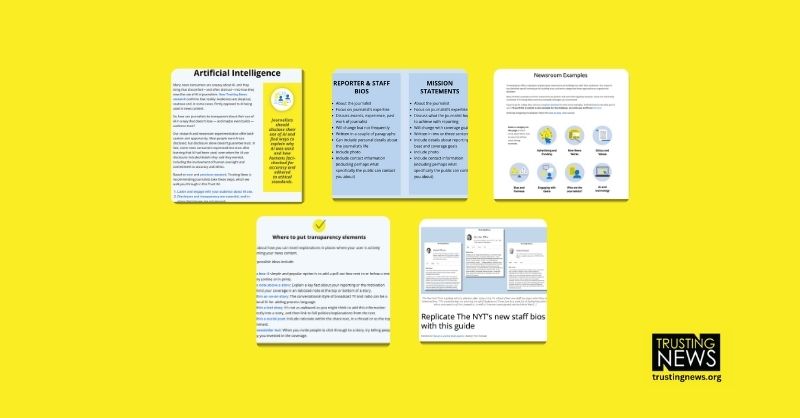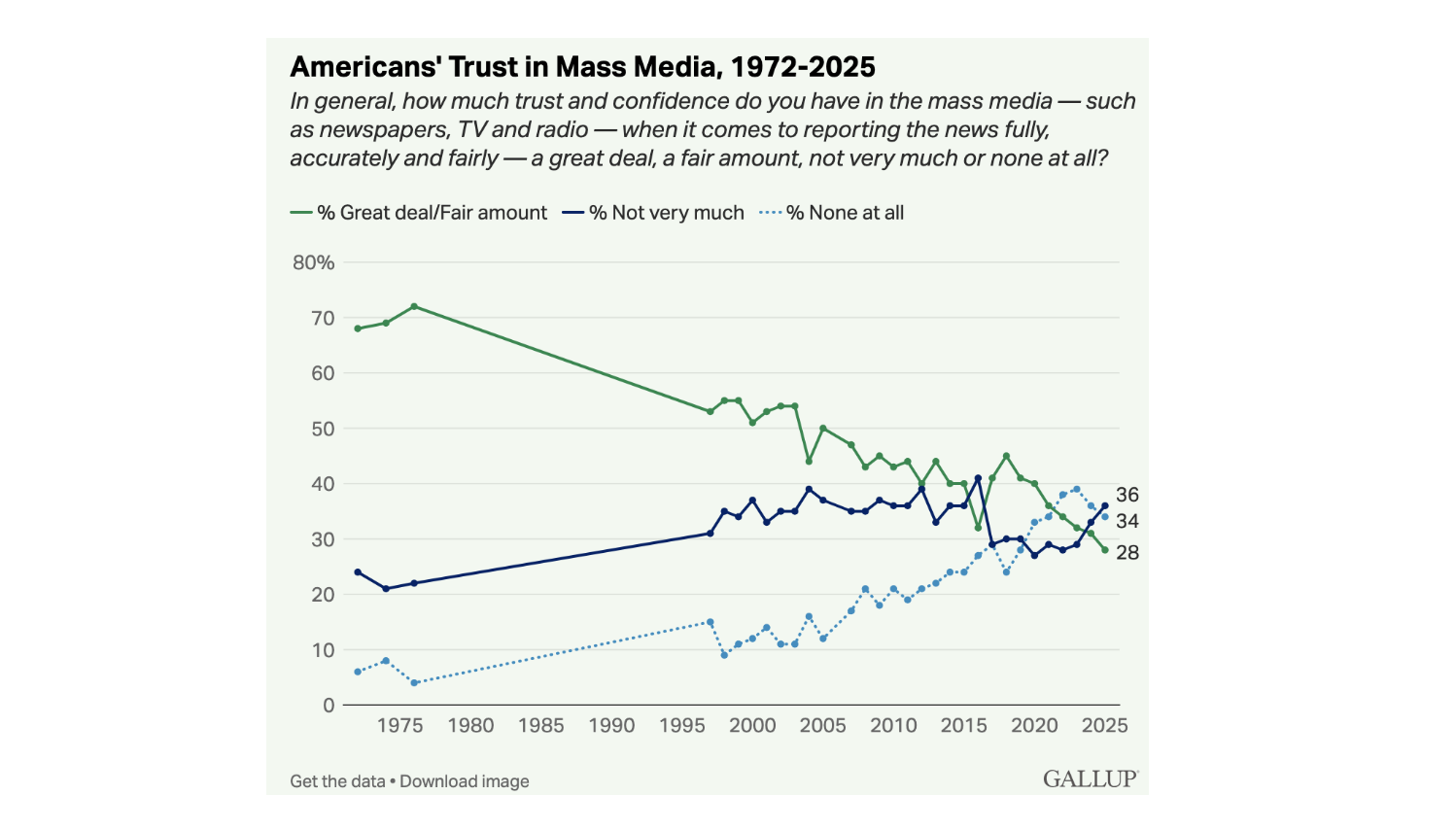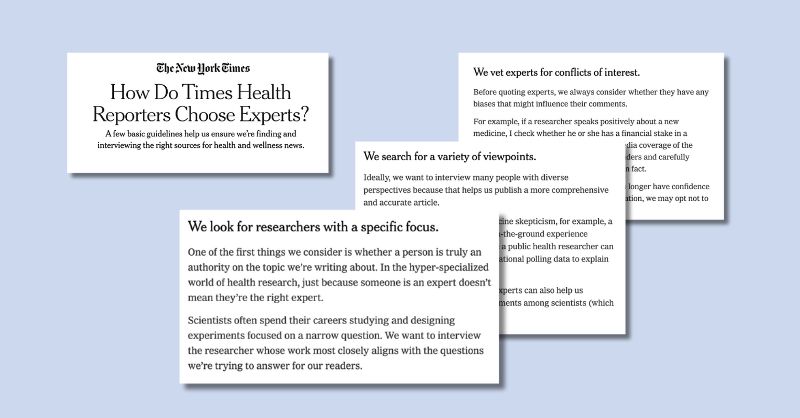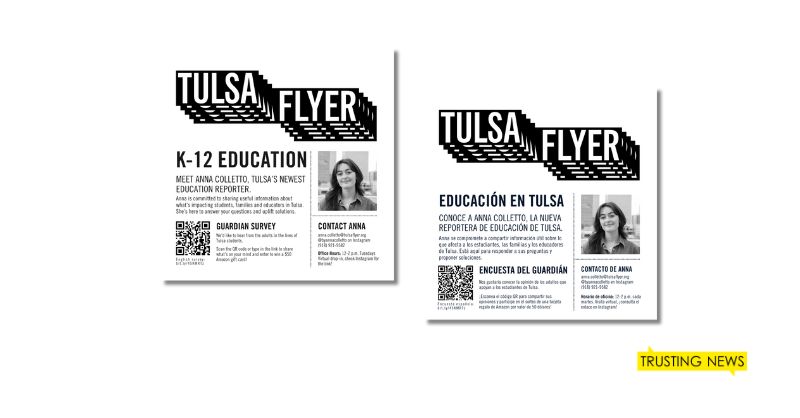
This weekly Trust Tips newsletter shares quick, actionable tips for how journalists can earn and sustain trust. Subscribe to get it in your inbox at trustingnews.org/newsletter.
Counter news fatigue by explaining the value behind your journalism
News fatigue is on the rise. Journalists feel it, and research clearly shows it: The news is making people feel worse, and that’s causing more and more people to avoid it.
Of course, people need news. But expecting people to tune in to all the alerts on all the platforms clearly is not working.
As journalists, we have a unique opportunity to help people find a middle ground through all of this — to stay informed without being totally consumed and alarmed by updates.
We just released a new News Literacy Trust Kit, created in collaboration with the News Literacy Project for National News Literacy Week, that tackles how journalists can do this.
This Trust Kit guides journalists through strategies to help their audiences become more news literate, and it has a whole section about how journalists can help their audience navigate through news fatigue.
In today’s newsletter, we want to highlight just one of our suggested approaches: adding context about the importance and relevance of news coverage to help your audience decide which news to consume and which to tune out.
Want more tips like this? This post was originally featured in our weekly Trust Tips newsletter. Subscribe to get it in your inbox each Tuesday.
Here’s how the Christian Science Monitor does this
In 2022, the Christian Science Monitor started sharing the larger context behind their news coverage by adding value labels to stories, letting users pick stories that align with the values most important to them.
These values appear above online headlines, indicating which value is driving the coverage. Some of the labels include: freedom, balance, community, equity, joy, respect. Users can select a value from a dropdown menu and find the latest news that falls under the umbrella of the value.
“This approach tells you why the story really matters – it gets to the heart of what people and societies are really wrestling with. But it also better explains why the story matters to you,” editor Mark Sappenfieild wrote when announcing the initiative.

How can you replicate this in your newsroom? You may not have the CMS capacity to add value indicators like this to stories, but your newsroom could do something similar by adding a sentence or two to newsletter blurbs, on air, or in social chatter that gets specific about each story’s intent, impact and value.
Whichever format you use, the more we as journalists can explain the importance of a story and get specific about how it might impact people’s lives, the more users will be able to prioritize which news they want to consume — helping them stay informed while not burning out.
Worth a read: How media can respond to news avoidance
Make sure you don’t miss this recent article about news avoidance written by the very smart research team of Benjamin Toff, Ruth Palmer and Rasmus K. Nielsen who have spent the past few years researching news avoidance and trust.
The article (which is an excerpt from the research trio’s newly released book, Avoiding the News), highlights things journalists can do to respond to news avoidance.
Their suggestions:
- Respond to how the news makes people feel
- Take communities and identities seriously
- Package and deliver content for new avoiders
- Communicate the value of journalism
- Reaffirm editorial values and defend professional standards
More news literacy tips
We’re really excited to release this News Literacy Trust Kit. In addition to giving strategies and tips for navigating news fatigue, the Trust Kit also covers:
- How journalists can insert news literacy into their daily coverage
- How to get transparent about basic reporting processes to help people understand news
- Tools to serve as a guide and help your audience navigate the news for themselves
- Conversation tips for talking about “the media” with friends and family
It also includes more examples of how newsrooms are working to this, as well as a list of News Literacy Project resources and tools you can share with your audience.
Check it out, and let us know if you have questions or have tried any of the strategies we’re suggesting!
We’re quieter on Medium these days
Just a reminder why you haven’t seen us posting on Medium that much lately: we recently revamped our website and have started publishing most of our content there.
It’s an exciting and long-anticipated move for us, and it’s a change we hope makes it easier for newsrooms to plug in with the work we’re doing.
Check out the newly designed website if you haven’t already, and reach out if you have any questions or want to connect!
Thanks for reading!
At Trusting News, we learn how people decide what news to trust and turn that knowledge into actionable strategies for journalists. We train and empower journalists to take responsibility for demonstrating credibility and actively earning trust through transparency and engagement. Subscribe to our Trust Tips newsletter. Follow us on Twitter and Facebook. Read more about our work at TrustingNews.org.

Project manager Mollie Muchna (she/her) has spent the last 10 years working in audience and engagement journalism in local newsrooms across the Southwest. She lives in Tucson, Arizona, where she is also an adjunct professor at the University of Arizona’s School of Journalism. She can be reached at mollie@trustingnews.org and on Twitter @molliemuchna.



